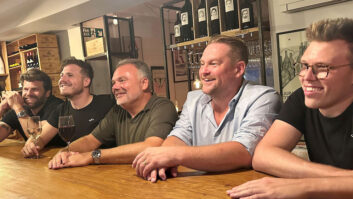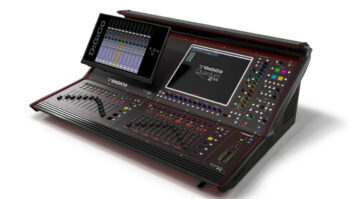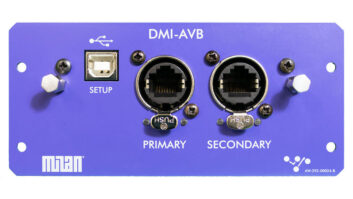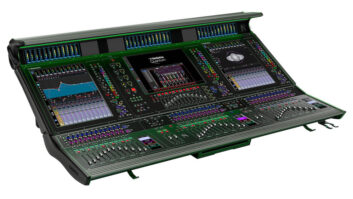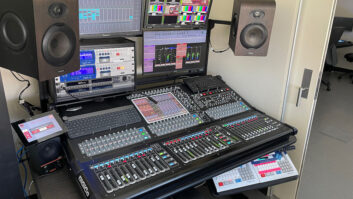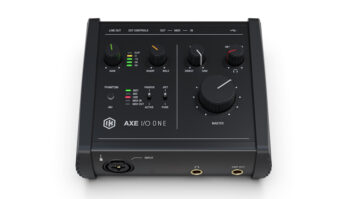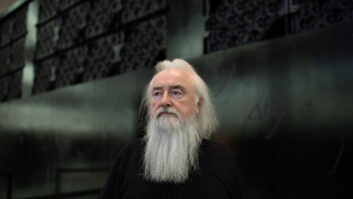The Who‘s 1973 rock opera Quadrophenia—which sets the tale of teen Jimmy Cooper amidst the global sociocultural upheaval and psychological angst of the times and the rivalry between Britain’s mods and rockers—has been reprised in a multimedia display on the band’s latest outing. The 37 date tour, which began in November and runs through the end of February, celebrates the four-decade anniversary of the album’s release and marks the band’s first major North American tour in four years. Even long-departed drummer Keith Moon and bassist John Entwistle make cameo appearances, joining remaining original members Pete Townshend and Roger Daltrey. Entwistle’s virtuosity and famous bass solo on “5:15” are showcased in live footage shot at the Royal Albert Hall in 2000, which streams onscreen. They also pay tribute to the late Keith Moon; their performance of “Bell Boy” incorporates video footage of a 1974 performance, with Moon’s vocals dubbed in from the LP (one of the only times in Who history his vocals were heard on an album).
The Quadrophenia tour also reunites the band with production partners Eighth Day Sound, who have worked with the iconic rockers on their last three major tours. This time out they’re carrying a pair of DiGiCo SD7 desks (each running the latest MACH III software) for FOH and band monitors, plus an SD-Rack at FOH and a d&b audiotechnik J-Series PA. The audio crew is comprised of longtime Who FOH engineer Robert Collins, Simon Higgs on monitors with support from Eighth Day’s Senior Audio Engineer Mark Brnich, and sound techs Drew Marbar and Carl Popek. [Pictured: Popek, Marbar, Collins, Higgs and Brnich.]
Collins started with the band in the late 1990s-early 2000s, and has also worked with Roger Daltrey and Pete Townshend on their solo projects, trading tours with engineer Paul Ramsey in between tours with Eric Clapton and others. “Paul used to look after me; he was my systems tech on The Who. I made sure the team was put in place, you know, ‘cause an English band should have an English engineer—or British, I should say. I’m Welsh, though. So here I am back. They wanted to get me back for this, and luckily it worked out timing-wise with the schedule. It’s worked out with Eric so I can go do that as well this year.”
A relative newcomer to the SD7, Collins is certainly no stranger to DiGiCo (he’s an early D5 adopter and part of the DiGiCo family). Collins says he wouldn’t part with his trusty D5 until this tour. “She’s been really good to me. Y’know? Obviously, I’ve grown up with the D5, so I was like, ‘I’ll just stay on my D5, thank you very much.’ I wasn’t ready to go to the SD7 until I knew we had the new racks… and honestly I couldn’t justify going to an SD7 working with a four-piece (like Clapton) playing blues and such, you know? I mean, that thing can run a small country, can’t it?! But for this tour, it seemed like it was time.”
Right out of the gate, he was floored by the SD7’s sonics. “It just sounds great, doesn’t it? And the biggest thing for me personally with digital desks is, I’m old-school. I come from the old analog school. I feel like I’m a part of the band. I learned the music. I’m into the music. I do the music. I know what everybody plays, what everybody does. That’s my thing. I’m not into the technical side. I just want a bass drum to sound like a bass drum. I want the piano to sound like a piano. And if you don’t get a feeling off a desk… I find that this console is musical. I feel musical on it. I feel as if I’m doing something on it. Not to mention any names, but there are other digital desks and I don’t get anything out of them. It’s like working a laptop, for God’s sake! That’s one thing about all the boys at DiGiCo: they came from the old school. They knew what we wanted. They spoke to engineers. But they didn’t just speak to them like every other company; they listened to them.
“I think DiGiCo consoles are the best out there. What you can do with this one is way beyond me. I don’t need to go down that line. Don’t tell James [Gordon, DiGiCo’s managing director], but I’m still not using Snapshots! I still do it all myself; I like to do it myself. I want to be part of it. I want to switch the guitar on when it’s supposed to be on. I feel part of it, and that’s what I want to feel. I don’t think in the digital domain.”
Monitor engineer Simon Higgs presides over the other SD7 at stage left, managing approximately 112 inputs for IEMs and such for the nine-piece band. He’s also a veteran Who member, starting in ’98 with Townshend on his Lifehouse project. He’s a diehard DiGiCo engineer, having also used the consoles since their release a decade ago.
“It’s the only digital console that I really care to use and the only one I really like,” Higgs explains. “I used a D5 with the Los Angeles band Sparks when they did 21 albums in 21 shows back in 2007, and that was the first time I really used the D5 for an extended tour… 150-odd songs, all programmed in. The Who’s monitor mix was analog for a long time until it started getting bigger and bigger and we realized we had to move to digital. So we started using two D5s, but that filled up quick. We currently are using an analog console for Pete, who has his own operator, and I look after the rest of the band on the SD7.”
With nearly 112 channels of odds and sods, Higgs says he has a lot going on managing the band’s in-ears, a few random wedges around the stage and submixing stems for Townshend’s mix. “My desk is pretty full; 112 channels and they’re pretty much filled up. A lot of outputs. I’ve still got some floor monitors up there. I’m mixing down to the analog console as well, which is just a 16-channel desk, so I’ll mix all the drums, drum floor monitors, drum sub, floor shakers [drum thumpers] under his seat…”
Having everyone on in-ears has made his job a bit easier. “Roger decided that in order for The Who to work again, he had to get used to in-ears… he couldn’t have a half-dozen wedges all around him like he used to. So he’s gone through the whole process of getting used to in-ears. They’re all on Jerry Harveys, and that’s really enabled the band to work again. Pete’s still got conventional fill monitors; he’s got four around him, just split up, one doing vocal, a stereo pair doing something else, and there’ll be acoustic guitar in the wedge, and then a monitor behind him that has sound effects for ‘Quadrophenia’ or the loops that are in ‘Who Are You’ and ‘Baba O’Riley.’”
For effects, he’s primarily using what’s in the console, save a few outboard pieces, including a Lexicon PCM 60 for the snare drum, and a Bricasti M7 reverb for Roger’s vocal that he says “is absolutely amazing.”
‘Amazing’ is often the tone of reviews streaming in from critics and fans, not only heralding the show but also the durability of both Townshend and Daltrey. Their “My Generation” anthem notwithstanding (”I hope I die before I get old”), the founding members did just that (both are now in their late ‘60s) and if the Quadrophenia tour is any indication, they still have a lot of rockin’ left to go. As for engineer Robert Collins, it’s a full-circle homecoming of sorts, having grown up on their music.
“I got a good memory on me,” he laughs. “It’s very short. But The Who have been part of my musical thing. Them, the Beatles, the Stones, the Kinks—that’s what I grew up on. In fact, I was pissed off at them, actually. As a teen, I queued up in the top rank in Swansea in Wales to see The Who, and they didn’t fucking turn up! I was pissed off. They had a fight or something. This was the ‘60s. But it’s kind of funny… Who’d have thought that when I was growing up trying to play in little bands and not very good, listening to all these great singers, that I’d end up engineering for many of them?”

